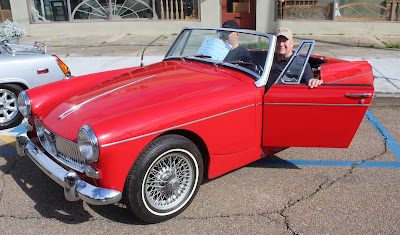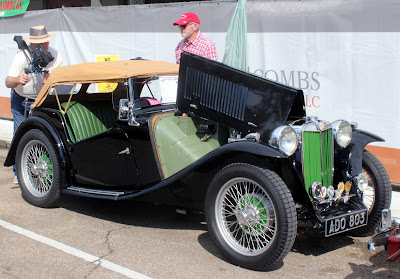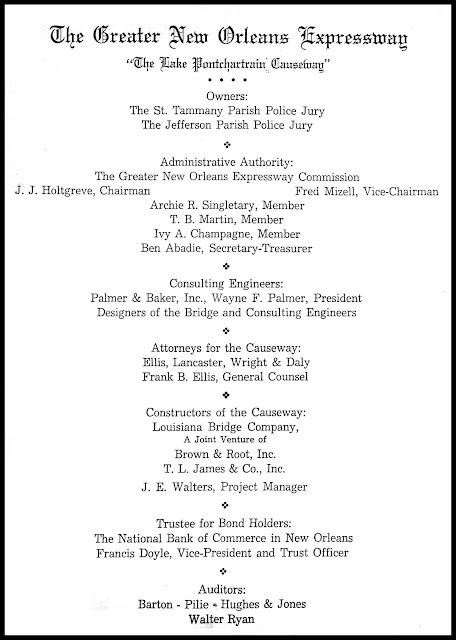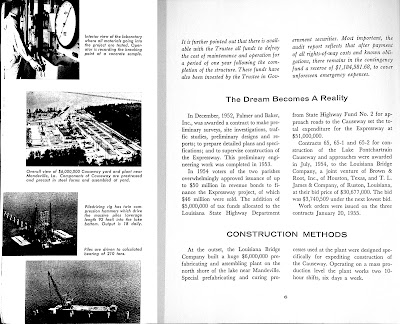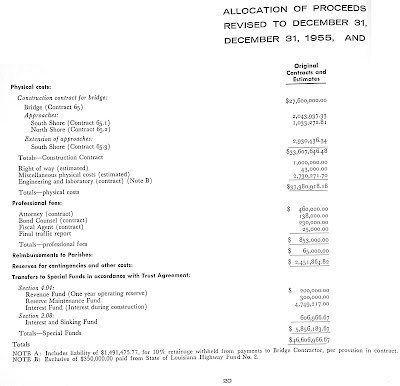Several dozen foreign made automobiles were on display on streets and parking lots in downtown Covington March 29 when the annual British car show encircled the Trailhead. Here are some photographs. Click on the images to make them larger.
Saturday, March 29, 2025
British Car Show 2025
Spanish Origins of Madisonville
In 1911 a number of speeches were given at the 100th anniversary celebration of St. Tammany Parish. The event took place in Bogue Falaya Park in Covington, but several public officials from other area towns were invited to tell about their municipalities. Here is the one given by Judge Thomas A. Burns.
A FEW HISTORICAL NOTES FROM MADISONVILLE, LA.
It has been said that Madisonville antedates New Orleans in time of settlement. Going back to the Spanish regime the beautiful banks of the Tchefuncta, now occupied by the town of Madisonville, was the point of landing or embarking of the Spaniards as they passed to and fro from their settlements to inland stations, and on to Baton Rouge, where they were strongly established.
They built the road from Madisonville running west to Ponchatoula, and from thence to Baton Rouge, giving it the name of "King's Highway." It was their overland route between the two points, and it was traveled frequently.
The noted Lafitte and his men found safe rendezvous on the banks of the Tchefuncta. Later, Mr. Joseph Baham, a French gentleman, came from Mobile and settled at the spot chosen as a settlement and landing place by the Spaniards, making a plantation of the spot. The old plantation residence is still to be seen in the town, surrounded by modern dwellings. The plantation was afterwards laid off in town lots and sold. Thus it was transformed into a village.
The Choctaw Indians lived near the village. Peace and harmony existed between them and the white people. One of their greatest chiefs, Mingo, spent much of his time in the village ,frequently slept under an oak tree on the bank of the river. This tree is known as "Old Mingo." It stands a fitting monument to his memory.
General Andrew Jackson entered Madisonville by the King's Highway," having marcned into that road a mile from town, when he left the "Kentucky Road." Here he embarked, with his troops, crossing the lake in vessels, and reaching New Orleans in time to prevent its capture by General Pakenham. -
The plantation home of General Morgan, the friend of General Jackson, was near Madisonville. After the General's death it passed into other hands. It is a fine old place,and in a good state of preservation. General Morgan's body rests in the town cemetery.
Madisonville became a summer resort for visitors from New Orleans, and a resting place for travelers journeying to or from the city. They crossed the lake in fine steamers, which ran on regular, schedule time.
During the Civil War, while no battle took place in or near the town, the shot and shell of the enemy reminded the inhabitants that they, too, had a part in the great conflict. Recovering from the ravages of war the place has increased in population and in prosperity.
It is a point for lumber export. Here were shipped the products of the surrounding country. The landing place of the Ft. Biloxi Spaniards has become the thriving town of 1911.
St. Tammany Farmer Newspaper April 29, 1911
Friday, March 28, 2025
Grandfather's Christmas
Among the items recently found in the attic of the Oliver Hebert house on Rutland Street in Covington was an old book named "One Christmas Back in Grandfather's Time." It told the story of a family getting ready Christmas on grandfather's farm. The profusely illustrated book was published by Plampin Litho in 1906
The Oliver Hebert house is now being offered as visitor lodging under the name of "Oliver & Cecile."
Tuesday, March 25, 2025
Parish Celebrated 100th Anniversary in 1911
Souvenirs from the 1911 celebration of St. Tammany Parish's 100th Anniversary were recently found in papers stored in the attic at the Rutland Street home of the late Oliver Hebert. New owners purchased the property in December and found a treasure trove of materials chronicling local and family events across several decades.
Two of those treasures were souvenir napkins distributed during the 100th year festivities. Here are photographs of the two napkins.
Click on the above image to make it larger and more readable.
Bogue Falaya Park Dance Rules - 1913
In 1913 a "dance hop" was held at Bogue Falaya Park in Covington for the entertainment of the Tulane University Football Squad and its friends. There were some rules about what kind of dancing would be allowed, however. Here is the leaflet announcing the complimentary dance event.
Click on the image to make it larger and more readable.
Sunday, March 23, 2025
Red Cross Aids Transients - 1936
In the mid-1940's the Covington Chapter of the American Red Cross kept a copy of the organization's "Aid To Transients" Guideline, a booklet published in 1936 telling of the various forms of aid that were available to people without means passing through the city.
After World War II, this was especially important as many of those travellers were service men and women trying to re-establish into society. At certain times of year, there would be a number of individuals and families crossing the country looking for work or just trying to get to relatives on the other side of the continent.
Here is that Red Cross Booklet. Click on the images to make them larger.
Saturday, March 22, 2025
Causeway Celebrates Opening Ceremony 1956
In 1956 the Lake Pontchartrain Causeway was opened to traffic for the first time, along with a motorcade and grand opening ceremonies. Here is the program for that long-awaited event. Click on the images to make them larger.
First Year of Causeway Report
A booklet was produced by the Greater New Orleans Expressway Commission in 1956 to describe the past year's work on the Lake Pontchartrain Causeway and its approaches. Here is that booklet. Click on the images to make them larger.













